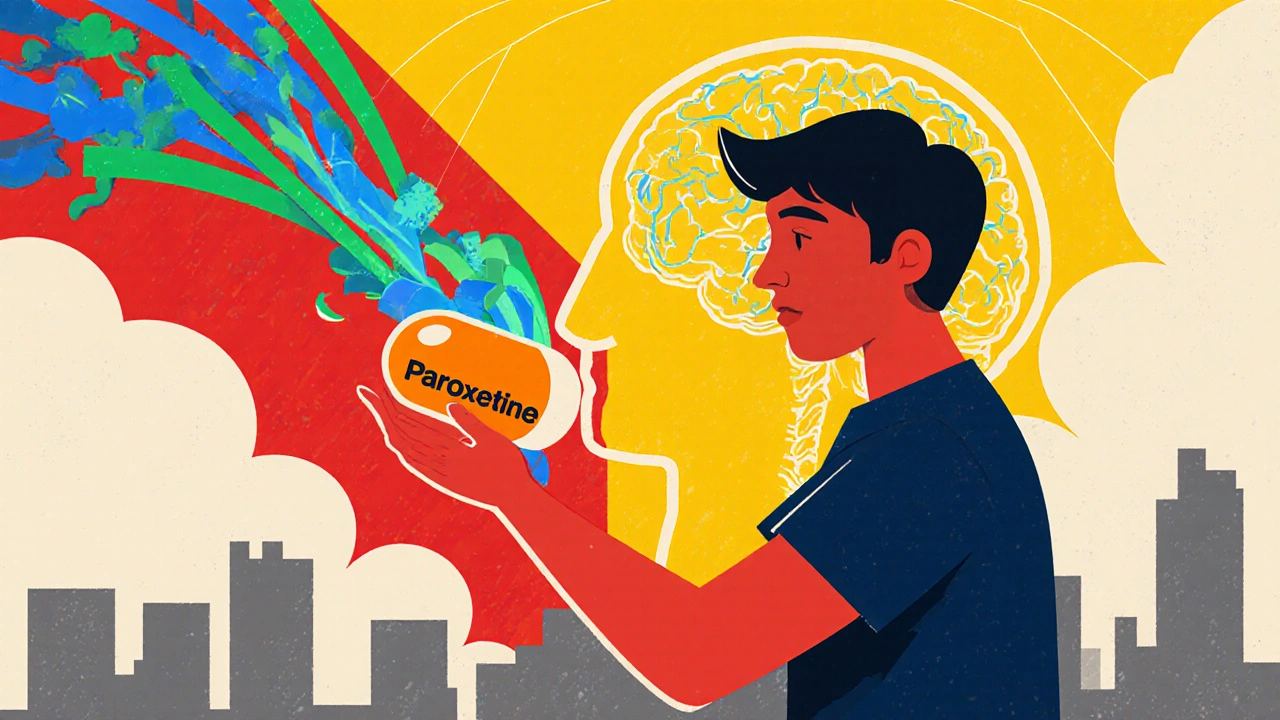Paroxetine – Uses, Side Effects, and Comparisons
When you hear the name Paroxetine, a selective serotonin reuptake inhibitor prescribed for depression, anxiety, and related mood disorders. Also called Paxil, it works by keeping more serotonin available in the brain, which helps lift mood and calm nerves. Paroxetine is one of the most talked‑about antidepressants, and understanding its role can make your treatment decisions a lot easier.
Paroxetine belongs to the broader class of Selective serotonin reuptake inhibitors (SSRIs), drugs that block the reabsorption of serotonin, thereby increasing its concentration in the synaptic gap. This class also includes fluoxetine, sertraline, and citalopram, each with its own balance of benefits and drawbacks. The main goal of any SSRI, including paroxetine, is to alleviate depression, a mood disorder marked by persistent sadness, loss of interest, and impaired daily functioning. By boosting serotonin, SSRIs aim to restore a more stable emotional baseline.
Beyond depression, paroxetine is widely used for anxiety disorders, conditions such as generalized anxiety, social phobia, and panic disorder that cause excessive worry and fear. Its calming effect makes it a go‑to option when anxiety interferes with work, relationships, or sleep. However, the drug isn’t a one‑size‑fits‑all. Dosage needs careful adjustment for older adults, people with liver problems, or those taking other medications that affect serotonin levels. Missed doses can lead to withdrawal symptoms, so consistency is key.
When you compare paroxetine to other SSRIs, a few patterns emerge. It often has a higher incidence of sexual side effects and weight gain, but it may work faster for some patients with severe anxiety. Drug‑interaction warnings are stricter, especially with blood thinners or certain antifungal agents. Knowing these nuances helps you and your clinician decide whether paroxetine’s strengths outweigh its drawbacks in your specific case.
In the collection below you’ll find deeper dives into the risks, benefits, and clinical guidance for many medications— from antiretrovirals to blood‑pressure drugs, and from supplements for brain health to treatments for rare cancers. Look for posts that compare paroxetine with its SSRI peers, discuss dosing strategies, and explore how it fits into broader treatment plans. This context will give you a rounded view before you settle on any prescription.
How Paroxetine Affects Mood and Emotional Regulation
Explore how paroxetine works, its effects on mood and emotional regulation, common side effects, and tips for managing them, plus a quick SSRI comparison.
Read more
